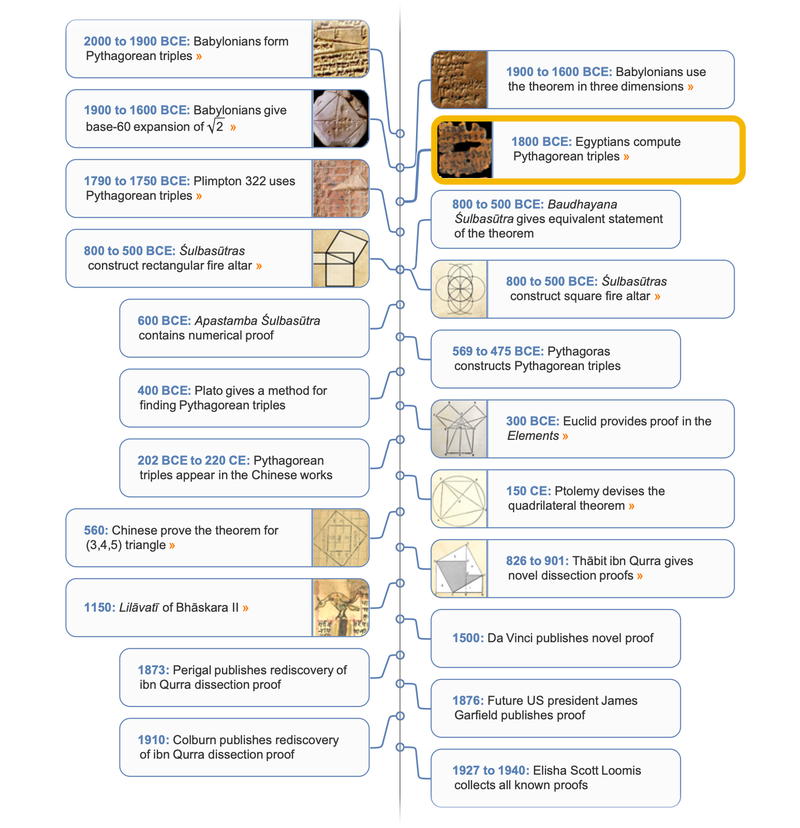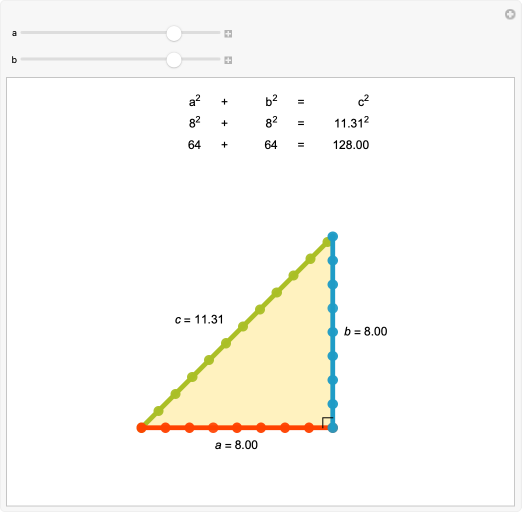around 2000–1650 BCE
Berlin Pythagorean Theorem Papyrus
Egyptian solution to a quadratic equation
Berlin papyrus 6619 is an ancient Egyptian document dated to around 2000–1650 BCE. It contains four problems spread across two large fragments and about 50 small fragments. The most interesting of its problems suggests some knowledge of the Pythagorean theorem. On the other hand, it may represent only straightforward solution to a single quadratic equation in one unknown.

The Berlin papyrus provides the only evidence that the ancient Egyptians may have understood the Pythagorean theorem centuries before the Pythagoreans. In particular, the Berlin papyrus contains four problems, the first of which effectively states, "The area of a square of 100 is equal to that of two smaller squares. The side of one is 1/2 + 1/4 the side of the other." In modern terms, the problem suggests the simultaneous equations x² + y² = 100 and x = (3/4)y which have unique positive solution y = 8 and x = 6.



















